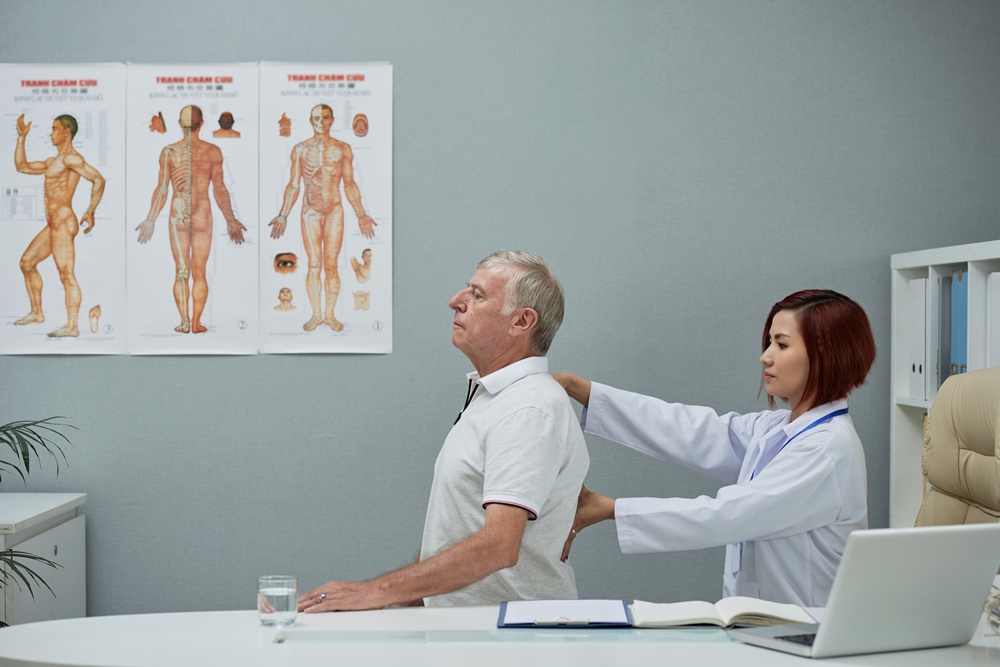Is digital twin technology a viable route to treating pain?

By Prof Mick Thacker, Dr Kate Ryan and Leslie Pan
Pain, particularly musculoskeletal (MSK) pain, is both pervasive and complex.
Globally, approximately 1.71 billion people suffer from MSK conditions, which account for the leading cause of disability worldwide, with lower back pain being the single biggest contributor across 160 countries [1].
In the UK alone, between one-third and one-half of adults – just under 28 million people – live with chronic pain, with prevalence rising to 62 per cent among those over 75 [2].
This burden is both physical and economic. MSK pain reduces mobility, impairs productivity, and often intersects with mental health challenges and comorbidities [1].
Standard treatments, including pharmacological approaches, physical therapy and lifestyle modification, often meet limited success because pain is multifactorial, encompassing biological, psychological and social contributors.
To address this, a modern solution must integrate deep scientific understanding of the body, for example tissue pathobiology, pain neurobiology, neural feedback loops and active inference models, with the modern societal and work-related pressures that contribute to our pain experiences.
Breakthroughs in AI and digital technology now allow us to imagine computational frameworks that capture this complexity in real time, paving the way for truly personalised dynamic and preventive interventions aligned with the latest pain neuroscience.
AI and digital twins: opportunities and challenges in healthcare
A digital twin is a virtual model; a dynamic, continuously updated replica of a real-world physical object or system.
In healthcare, this can mean constructing a “patient-in-silico” that integrates data streams such as imaging, lab tests, genetics, wearables, psycho-physics and environmental context to mirror a patient’s physiology and predict their health trajectory [3].
AI is already being used widely in medicine, from modelling cancer risks, to detecting patterns in imaging studies, and the idea of digital twins is beginning to emerge and develop further.
In cardiology, it’s possible to simulate arrhythmia ablation outcomes, and literature reviews are beginning to analyse the effectiveness of AI-enabled digital twins across health settings.
Despite the complexities of pain and how we experience it, the algorithms are catching up – it’s possible to accurately model parts of the body, specific injuries, and even predict risks ahead of time [5].
Furthermore it is possible to apply prospective ‘treatments’ to these models to establish best possible options for the patient at the level of the individual.
However, the path is not without challenges.
High-quality data is essential as well as advanced computing infrastructure, and robust modelling practices to handle any uncertainty, and make sure any recommendations are safe and accurate [6].
Ethical and regulatory concerns are also significant.
Where will the data be stored, used and who owns it? As with any new technology, there are legal frameworks to navigate, and well as maintaining trust [7].
Regulators are requiring more rigorous validation and safety evidence; however, the desire to adopt new innovative AI approaches in clinical practice is there.
From data to prevention: how digital twins can change physio care

Prof Mick Thacker
Digital twins are especially promising for MSK pain management and physiotherapy.
Unlike static guidelines, digital twins can dynamically model individual biomechanics, a person’s workload (if used in work settings), pain tolerance, related behaviours and recovery trajectories.
Imagine a police force with high rates of lower-back injury.
An aggregated digital twin of the workforce could identify key risk factors, such as on-task risks, shift durations or poor use of equipment.
It might predict which subgroup is at elevated risk and suggest tailored preventive interventions, such as micro-break schedules or movement retraining, validated in real time via small pilot trials.
The basis for this approach is already happening within the Lincolnshire Police force, the first to trial a system of this kind.
This closes the gap between novel prehabilitation and rehabilitation literature and formal clinical guidelines (for example NICE), accelerating this transition from evidence-to-practice.
Furthermore, simulation capabilities (“what if” modelling) enable exploration of different interventions before real-world rollout, allowing personalisation, and testing not previously possible.
Internally, such systems can support physiotherapy training, onboarding and supervision, expanding capacity at times when physiotherapy shortages are acute.
Crucially, digital twins should support, not replace, therapists.
By handling routine monitoring and evidence synthesis, they have the potential to free physiotherapists to focus on complex cases requiring human judgement, direct action and empathy.
At a time when there is a shortage of over 4,000 physiotherapists in the UK, this use of AI makes complete economical sense.
The bigger picture: what treating pain early could do for people and society
Shifting from reactive treatment to proactive prevention with AI models means multiple benefits across sectors: better individual health, less time off work, more efficient care pathways and time back for healthcare professionals.
Where might digital twin technology have the most impact?
Other potential deployment environments could include gyms, insurers, NHS services, workplaces, schools and community centres.
For instance, non-native speakers or individuals with lower technology literacy could benefit through accessible IoT wearables and AI-driven guidance, similar to findings from platforms such as Phio Access, which emphasise user-centred design and inclusiveness.
But equitable diffusion is essential. Without careful planning, digital twins risk exacerbating inequalities.
Key considerations include data bias, unequal access to technology, clinician scepticism and patient mistrust. Transparent, patient-centred consent processes and inclusive design are vital.
Technologically, we must ensure robust data pipelines, continuous, high-fidelity and secure, between physical individuals and their digital twins, guaranteeing model reliability and trustworthiness.
Conclusion
Digital twin technology holds great promise for MSK pain management, enabling truly personalised prevention, and more empowered healthcare professionals.
But realising this potential demands realistic goals, robust infrastructure, thoughtful ethics and inclusive deployment.
If we get this right, digital twins may well help us finally change the way we understand and treat pain.
References
- World Health Organization. Musculoskeletal conditions. WHO Fact Sheet. 2022. Available at: https://www.who.int/news-room/fact-sheets/detail/musculoskeletal-conditions
- Fayaz A, Croft P, Langford RM, Donaldson LJ, Jones GT. Prevalence of chronic pain in the UK: a systematic review and meta-analysis. BMJ Open. 2016;6(6):e010364. doi:10.1136/bmjopen-2015-010364
- Stanford Medicine. Medical digital twins: shaping the future of personalised healthcare. 2023. Available at: https://med.stanford.edu/medicine/news/current-news/standard-news/medical-digital-twins.html
- The Wall Street Journal. A digital twin of your heart could help doctors treat you. 2024. Available at: https://www.wsj.com/health/healthcare/digital-heart-surgery-patient-treatment-c35ec4be
- Liu W, Zhang Y, et al. Digital Twins in Healthcare: Current Applications and Future Opportunities. Frontiers in Digital Health. 2025. PMID: 12294331
- Ojo A, et al. Digital twins for healthcare: barriers and enablers. npj Digital Medicine. 2023. PMID: 10686591
- Avoiding growing pains in the development and use of digital twins. 20 Aug 2024. Available at: https://www.reuters.com/legal/legalindustry/avoiding-growing-pains-development-use-digital-twins-2024-08-20






